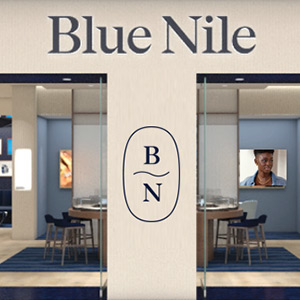
On Friday, Seattle-based Blue Nile filed an IPO through a SPAC (special purpose acquisition company) named Mudrick Capital Acquisition Corp. II.
The transaction implies an $873 million valuation for the combined company, at $10.15 a share, according to a statement. The combined company will be called Blue Nile and listed on Nasdaq. Its proxy solicitation materials can be seen here.
The deal is expected to provide around $450 million of capital for the company, which includes $50 million of new preferred equity provided by Mudrick Capital, as well as $80 million in capital (about $50 million of which has been pre-funded) from Mudrick and Blue Nile’s existing sponsors—Bain Capital Private Equity, Bow Street, and Adama Partners.
The existing sponsors will control 40% of the company’s equity.
CEO Sean Kell and the rest of its current management team will continue to head the e-tailer. Kell has headed the company since 2019.
Among the interesting nuggets in the prospectus:
– Like many jewelry businesses, Blue Nile was struggling until it received a boost from COVID-19.
Its 2021 revenue was $566 million, up 21% from the prior year; 2020 revenue totaled $469 million, up 0.8% from 2019; and 2019’s revenue ($465 million) was down 7.6% from 2018’s.
It expects revenue to grow between 2% and 14% in 2022 (hitting $581 million–$651 million) and 13.7%–18.8% in 2023 (to reach $661 million–$773 million).
– In 2021, the company recorded a $40 million net loss and an adjusted EBITDA of $10 million; in 2020, it recorded a $29 million net loss and adjusted EBITDA of $15.5 million; and in 2019, it recorded a $74 million net loss (due in part to a one-time impairment) and $18.7 million in adjusted EBITDA.
– The prospectus estimates that 25% of jewelry sales are currently made online, though Blue Nile currently claims only 0.8% of the market. It said that “digitally native” brands still comprise only 2% of the market, while independents control 65%.
– While Blue Nile is currently known for its generic engagement rings, the company’s “long-term aspiration” is to have 50% of sales come from exclusive and proprietary designs.
– Blue Nile’s website gets 2.5 million hits a month.
– About one-third of its revenue involves a call to its call center—higher than other “push-button” dot-coms, but not uncommon for jewelry.
– Its presentation said it has better “aided awareness” (48%) than most of its e-competitors, including Brilliant Earth (38%), James Allen (16%), Ritani (15%), and Vrai (15%). That is dwarfed by many of the big brick-and-mortar names, including Tiffany (76%) and Zales (71%).
– Blue Nile is a big believer in its fleet of showrooms, which are expected to number 26 this year. They offer seven times the conversion rate of its website, and after a year, sales increased an average of 80% in the local trade area.
Its valuation is far less than the $1.1 billion valuation achieved by rival e-tailer Brilliant Earth when it went public in September. (Brilliant Earth’s market cap has since fallen.)
The presentation does not include a lot of detailed information on risk factors, as is common for SPACs. Listed factors include “changes in consumer attitudes toward jewelry,” diamond and jewelry consumers “decid[ing] not to purchase online,” and “environmental, social, and governance matters.”
Blue Nile was founded in 1999, which makes it “one of the few still alive” from the original dot-com era, Axios noted. It had been public from 2004 to 2017, when it was purchased by Bain Capital and Bow Street for $500 million. In 2018, the company said it might go public again.
Photo courtesy of Blue Nile
Follow JCK on Instagram: @jckmagazineFollow JCK on Twitter: @jckmagazine
Follow JCK on Facebook: @jckmagazine





